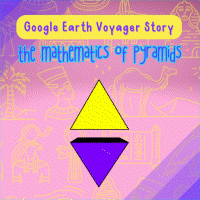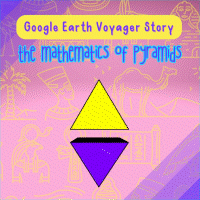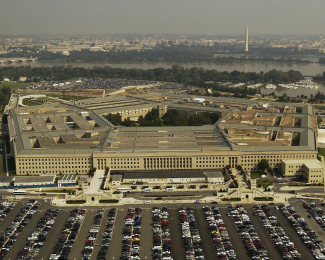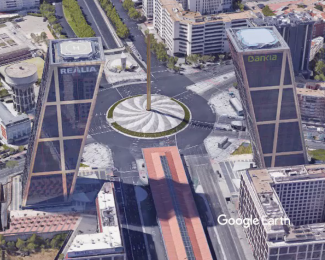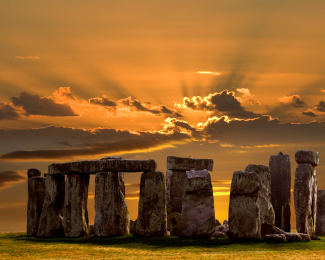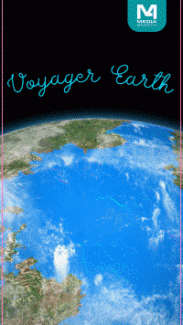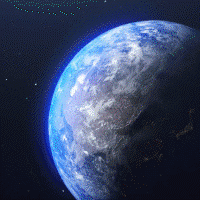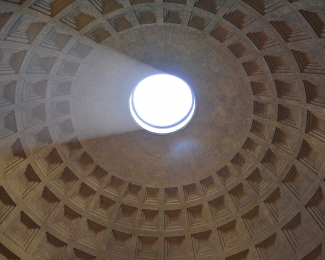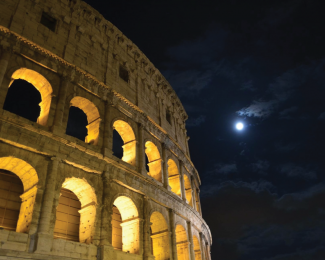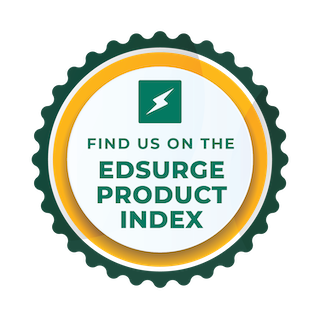Content Showcase: Google Earth Voyager Stories

Take your students on a math adventure with our Google Earth Voyager Stories. Using the power of Google Earth, Media4Math has developed a collection of resources that contextualize math in the real world. Here is our current collection of resources, but keep checking back, as this collection continues to grow.
Click on any of the titles to learn more about the Google Earth story. You'll need Chrome to view these adventures on the Google Earth app.
(Want to learn more about our subscription packages? Click here.)
| Thumbnail Image | Description |
|---|---|
|
Google Earth Voyager Story: The Geometry of City Planning, Part 2
In this activity, learn about the geometry of city planning. We explore why many cities in the US and around the world are laid out in a rectangular grid made up of parallel and perpendicular lines. This companion to a Google Earth Voyager Story provides a deeper understanding of the geometric concepts introduced. Perpendicular Lines, Parallel Lines and Applications of Points and Lines |
|
Google Earth Voyager Story: The Geometry of City Planning, Part 1
In this activity, learn about the geometry of city planning. We explore why many cities in the US and around the world are laid out in a rectangular grid made up of parallel and perpendicular lines. This companion to a Google Earth Voyager Story provides a deeper understanding of the geometric concepts introduced. Perpendicular Lines and Parallel Lines |
|
Google Earth Voyager Story: Architectural Prisms, Part 3
In this Google Earth Voyager story visit architectural landmarks in New York City to learn about the geometry of prisms. In this lesson, visit the Freedom Tower in Lower Manhattan and learn about antiprisms. Then build a scale model of the Freedom Tower. 3-Dimensional Figures |
|
Google Earth Voyager Story: Architectural Prisms, Part 2
In this Google Earth Voyager story visit architectural landmarks in New York City to learn about the geometry of prisms. In this lesson, visit the 432 Park Avenue to learn about rectangular prisms. Then build a scale model of this building. Rectangular Prisms |
|
Google Earth Voyager Story: Architectural Prisms, Part 1
In this Google Earth Voyager story visit architectural landmarks in New York City to learn about the geometry of prisms. In this lesson, visit the Flatiron Building and learn about triangular prisms. Then build a scale model of the Flatiron Building. Triangular Prisms |
|
Google Earth Voyager Story: The Mathematics of Pyramids, Part 2
In this Google Earth Voyager story visit pyramids around the world and learn about the geometry of pyramids. In this lesson, visit two Mayan pyramids and learn about sequences and series, as well as using what you've learned about the geometry of pyramids and other three-dimensional figures. Pyramids |
|
Google Earth Voyager Story: The Mathematics of Pyramids, Part 1
In this Google Earth Voyager story visit pyramids around the world and learn about the geometry of pyramids. In this lesson, visit the pyramids of Giza and learn about the properties of pyramids. In particular, see the derivation of the formula for the volume of a pyramid. Pyramids |
|
Google Earth Voyager Story: Polygon Architecture, Part 2
In this Google Earth Voyager Story, explore the geometry of polygons in the context of architecture. Applications of Polygons |
|
Google Earth Voyager Story: Polygon Architecture, Part 1
In this Google Earth Voyager Story, explore the geometry of polygons in the context of architecture. Applications of Polygons |
|
Google Earth Voyager Story: Quadrilateral Structures II
In this Google Earth Voyager Story, explore the geometry of quadrilaterals in the context of architecture. Applications of Quadrilaterals |
|
Google Earth Voyager Story: Quadrilateral Structures I
In this Google Earth Voyager Story, explore the geometry of quadrilaterals in the context of architecture. Applications of Quadrilaterals |
|
Google Earth Voyager Story: The Geometry of Sustainable Architecture, Part 1
In this Google Earth Voyager Story learn about the geometric concepts that underly sustainable architecture. How do architects build tall skyscraper that can retain heat when its cold? In this exploration see how the ratio of the surface area of the building to its volume plays a key role in how architects design building. Applications of Surface Area and Volume and Rational Functions and Equations |
|
In this Google Earth Voyager Story study the sustainable architecture designed for life in Antarctica. Why Antarctica? There are several research stations in the Antarctic where scientists a great deal of the year conducting research. Also, the Antarctic simulates the harsh climates of planets like Mars, where future explorers will spend years of time in the future. To see the Google Earth version of this lesson go to this link (best viewed in Chrome). Note: The download is the teacher's guide. Surface Area, Volume and Rational Functions and Equations |
|
Google Earth Voyager Story: The Geometry of Castles
During Medieval times, castles were fortresses, mini-cities where the royalty lived, and symbols of power. Most castles were tall, imposing structures. But why were they so tall? Was it just for symbolic reasons, to allow a king to show his center of power and influence? In this exploration, we will explore the geometry of castles in order to better understand why they were built the way they were. Applications of Angles and Planes |
|
Google Earth Voyager Story: Triangular Structures
In this Google Earth story, we explore triangles by looking at different architectural sites where tria Applications of Triangles |
|
Google Earth Voyager Story: Circular Structures, Part 2
In this activity, learn about the architecture of the Roman Pantheon. This companion to a Google Earth Voyager Story provides a deeper understanding of the geometric concepts introduced in the Voyager Story. Applications of Circles and Cylinders |
|
Google Earth Voyager Story: Circular Structures, Part 1
In this activity, learn about the architecture of the Roman Colosseum. This companion to a Google Earth Voyager Story provides a deeper understanding of the geometric concepts introduced in the Voyager Story. Applications of Circles |
Join the hundreds of thousands of math educators who have used Media4Math resources in their classroom to engage their students. Our new integrated Library/Classroom product has everything you need!

About Media4Math
Our Mission
Media4Math's mission is to educate 21st-century students in real-world applications of math with digital technology. We bring math to life in your classroom with a rich blend of resources to inspire your students to learn. Our philosophy is that the procedural side of math is a prerequisite to using it, but we also find that real-world math applications can provide motivation and even inspiration for math students. Math is its own language and it has important stories to tell. While many of our resources are for procedural skills, there are many resources that are real-world applications of math. Some of these resources rely on partnerships with other educational publishers.
About Media4Math Library
Media4Math Library contains over 15,000 high-quality resources designed for classroom or home use. This includes instructional, remediation, and assessment resources. You'll find truly innovative resources that bring math to life. Resources in Media4Math Library include:
- Videos
- Math Clip Art
- Math Examples
- Quizzes
- Tutorials
- PowerPoint and Google Slide presentations
- GoogleEarth Voyager Stories
- Algebra Applications
- Geometry Explorations
- Quizlet Flash Cards
- Desmos Resources
- Texas Instrument Resources
- Games and Simulations
About Media4Math Classroom
Media4Math Classroom provides ready-to-use interactive math lessons that teach, assess, and provide real-world applications of topics in Pre-Algebra, Algebra, and Geometry. Assign these modules to your students and capture assessment scores in an easy-to-use Dashboard. This is a growing library of instructional modules. Topics include:
- Arithmetic
- Pre-Algebra
- Algebra
- Geometry
- SAT Math Prep
Media4Math Classroom modules provide real world applications of math that will motivate your students. Here are some examples:
- Construction Site Math. Apply ratios and proportions to mixtures of cement and concrete. This module includes video resources and your students will get a real-world application of ratios and proportions.
- Counting Bison. Apply place value concepts to the real-world application of the bison population. Because the bison population has gone through dramatic changes in population, this become an opportunity to use and apply place value.
- Wildlife Refuge. This study of area and perimeter centers on the mustang population in the Nevada area. Students explore the relationship between area and perimeter of rectangular shapes in the context of designing a wildlife refuge.
The Media4Math Bundle
A subscription to the Media4Math bundle gives teachers access to all the resources listed above. Specifically:
- Access to all the Media4Math Library resources and tools.
- Access to all the Media4Math Classroom instructional modules.
To learn more about our subscription packages, contact us at admin@media4math.com.
Partnering with Media4Math
Media4Math prides itself on its strategic partnerships with other educational organizations. Our partnerships include the following partners:
-
Google Earth. Media4Math has partnered with GoogleEarth to create a comprehensive library of GoogleEarth Voyager Stories. These map-based explorations of geometry, geography, and culture will literally bring the math to life. See our collection of Voyager Stories by clicking on this link to the Google Earth resources.
-
Texas Instruments. TI is the leading provider of graphing calculators used in the classroom. Media4Math has partnered with TI to create a library of digital resources to support the use of these graphing calculators. These resources include videos, presentations, and related tutorials. See our collection of TI resources by clicking on this link to the TI resources.
-
Desmos. This free online resource that includes a graphing calculator and geometry tools. Media4Math has created an extensive library of resources that support the use of these Desmos resources. See our collection of Desmos resources by clicking on this link to the Desmos resources.
- Quizlet. We have partnered with the leading provider of interactive Flash Cards and is used by millions of teachers and students around the world. Media4Math has developed an extensive library of Quizlet resources. See our collection of Quizlet resources by clicking on this link to the Quizlet resources.
Link to the Media4Math Study Sets on Quizlet and search for "Media4Math."
- The Princeton Review. The Princeton Review is the leading provider of SAT prep and other test preparation courses and tutorials. Media4Math is an affiliate of Princeton Review and we have created a set of free SAT math resources, sponsored by Princeton Review. See this collection of SAT resources by clicking on this link to the Princeton Review resources.
If you would like to partner with Media4Math, please reach out to us at admin@media4math.com.





